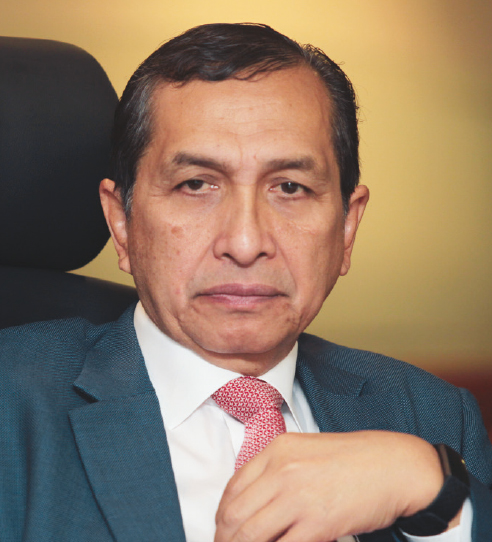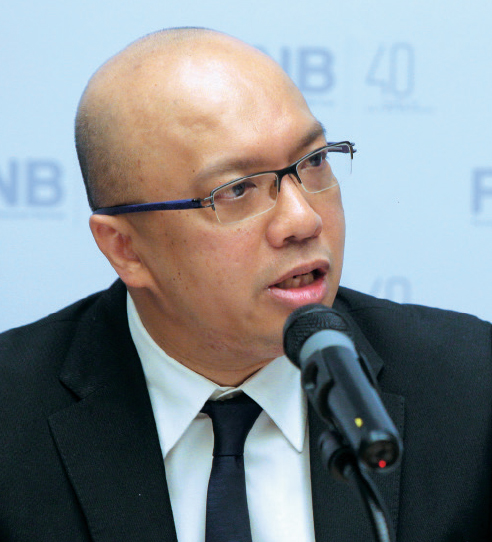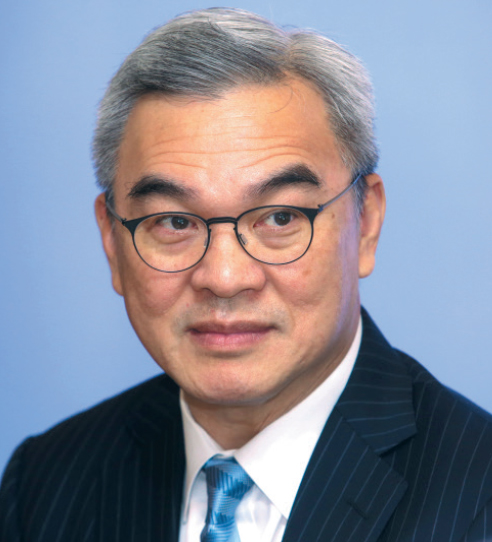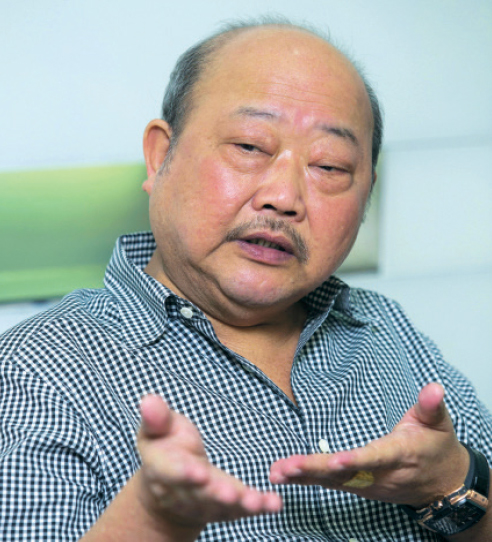
This article first appeared in The Edge Malaysia Weekly on December 30, 2019 - January 5, 2020
IT has undoubtedly been a tough 10 years for the Malaysian property sector, with the oversupply of office space in the Klang Valley, overhang of residential properties, calls from buyers and the government for more affordable properties and tighter lending conditions from banks.
Not only did property developers have to grapple with competition from other local players, China developers also proved that they were a force to be reckoned with, with mega developments such as the Forest City project in Iskandar Malaysia, Johor, being constructed at breakneck speed.
Nevertheless, this did not stop the sector from delivering milestone projects. The 2010s was the decade that saw mega corporate deals such as the merger between UEM Land Bhd and Sunrise Bhd in 2010 to create UEM Sunrise Bhd, one of Malaysia’s largest property developers today. It was also the decade that saw the announcement of major developments such as Bandar Malaysia — a mixed-use, transit-oriented development (TOD) in Kuala Lumpur — and Malaysia Vision Valley 2, a mega project developed by Sime Darby Property Bhd, which is a new growth corridor spanning 153,411ha and covering the districts of Seremban and Port Dickson.
It was also a milestone decade for investment conglomerate Permodalan Nasional Bhd (PNB), which made a takeover offer for property developer S P Setia Bhd in 2011. PNB also made headlines for its own behemoth development — the Warisan Merdeka project — which includes the iconic 118-storey Merdeka PNB118 tower, comprising office space, a luxury hotel and an observation deck. Once completed in 2021, the tower will be the tallest in the country and will serve as the new headquarters of PNB. Its construction is estimated to cost RM5 billion.
The decade saw a group of individuals stand out — they have managed to lead their organisations through a tough period and changed the property landscape with some of their forays. They include two former chiefs of PNB and two self-made entrepreneurs. We take a closer look at them here.

Tan Sri Hamad Kama Piah Che Othman
President and group CEO of Permodalan Nasional Bhd
(1998 to 2016)
Hamad Kama Piah, who retired as CEO of PNB in September 2016, led the investment conglomerate’s aggressive push into the property sector with some major property deals during the decade. This included PNB’s hostile takeover of one of the country’s largest property developers, S P Setia Bhd, in 2011. It was also under his watch that PNB took over an old name developer Petaling Garden Bhd.
He also oversaw the laumch of the highly ambitious Warisan Merdeka project, with its 188 storey tower, at the height of the properry market in 2014.
PNB unitholders were kept happy during his watch as they were rewarded with competitive returns. During his tenure, PNB’s Amanah Saham Bumiputera fund declared dividends ranging from 6.75 sen (in 2016) to 9.75 sen (in 2000).
Hamad Kama Piah started his career with PNB in 1979 as an investment analyst. He then took on other responsibilities in many areas of investment management and corporate finance within the group, including as a portfolio manager and head of corporate restructuring, before his appointment as CEO.
Throughout his corporate career, Hamad Kama Piah has served on the boards of some of Malaysia’s largest corporations, among them Sime Darby Bhd as deputy chairman, Chemical Co of Malaysia Bhd as chairman, Sime UEP Properties Bhd and i-Bhd. He was also a director of MNRB Holdings Bhd, Titan Chemicals Corp Bhd, Pos Malaysia Bhd and I&P Group Sdn Bhd, among others.
On Jan 1, 2017, he was appointed group chairman of UMW Holdings Bhd, a position he continues to hold today.

Datuk Abdul Rahman Ahmad
President and group CEO of Permodalan Nasional Bhd
(2016 to 2019)
Abdul Rahman succeeded Tan Sri Hamad Kama Piah Che Othman as president and group CEO of PNB on Oct 1, 2016.
He was formerly the CEO of Ekuiti Nasional Bhd (Ekuinas), a government-linked private equity firm. Prior to joining Ekuinas, he was group managing director of integrated media group Media Prima Bhd and CEO of property, construction and infrastructure company Malaysian Resources Corp Bhd.
Under Abdul Rahman’s leadership, PNB completed the injection of its property development company, I&P Group Sdn Bhd, into listed S P Setia Bhd on Dec 1, 2017, for RM3.65 billion cash. At the time, the move created the third largest Malaysian developer by land bank at roughly 10,000 acres, after Sime Darby Property Bhd (20,763 acres) and UEM Sunrise Bhd (about 13,000 acres).
In the same year, PNB’s wholly-owned property arm, PNB Development Sdn Bhd, completed the purchase of the 40% stake it did not own in Seriemas Development Sdn Bhd from Sime Darby Bhd for RM625 million.
However, there were times when Abdul Rahman had to justify the property deals that PNB was making. One such instance was the £1.58 billion acquisition of the commercial assets in Phase 2 of the Battersea Power Station redevelopment in London by PNB and the Employees Provident Fund in December last year.
PNB has a 65% stake in PNB-Kwasa International 2 Ltd, the special-purpose vehicle set up for the acquisition, while the EPF holds the other 35%. The ultimate selling entity was Battersea Project Holding Co Ltd, in which PNB companies S P Setia Bhd and Sime Darby Property Bhd each control a 40% stake. The remaining 20% is held by the EPF.
Touted as the UK’s most expensive yet, the property deal had been labelled as a bailout when announced in January last year, given news reports that the project had been suffering from financial strain and cost overruns.
When contacted by The Edge then, Abdul Rahman had dismissed the “bailout” concerns and explained that the deal was an arm’s length transaction and that PNB had gone through rigorous processes to ensure that the project was viable and fulfilled its stringent investment criteria.
Apart from that, Abdul Rahman and then PNB chairman Tan Sri Abdul Wahid Omar had also put together a six-year transformation plan for the group called STRIVE-15, which kicked off in 2017, to whip investee companies into shape and boost investment returns for PNB’s 14.1 million unitholders.
Among others, the plan saw the break-up of Sime Darby Bhd into three separately listed companies — Sime Darby Plantation Bhd, Sime Darby Property Bhd and Sime Darby Bhd. It also saw the demerger of UMW Oil and Gas Corp Bhd (now renamed Velesto Energy Bhd) from UMW Holdings Bhd, with the latter’s shareholding transferred to PNB.
Abdul Wahid resigned from his post at PNB at end-June 2018, a month after the 14th general election in May.
As for Abdul Rahman, he left PNB after his three-year contract ended on Sept 30 this year and was succeeded by Jalil Rasheed. Abdrul Rahman is now chairman of Sime Darby Bhd.

Tan Sri Liew Kee Sin
Chairman of Eco World Development Group Bhd
When Liew graduated from Universiti Malaya in 1981, it brought his parents to tears as he was the first boy from his village in Plentong, Johor, to be a university graduate.
Liew started his career as a banker in 1981, and after gaining five years of experience in the banking industry, he found his forte in property development.
Following a reverse takeover of S P Setia Bhd, he was appointed its group managing director in May 1996 and continued to helm the company as its president and CEO for the next 18 years until April 30, 2014. He was instrumental in transforming S P Setia into a major property player and one of his legacies is the redevelopment of London’s iconic Battersea Power Station that he initiated together with Sime Darby Property Bhd and the Employees Provident Fund.
Liew was appointed the first chairman of Battersea Project Holding Co Ltd in 2012, a position he held until September 2015.
When he lost control of S P Setia to Permodalan Nasional Bhd in 2011, Liew started Eco World Development Group Bhd and brought along with him some key staff that made S P Setia the success story that it was. This included his right-hand man and partner Datuk Voon Tin Yow — the former chief operating officer of S P Setia who is now executive director of EcoWorld — and Datuk Chang Khim Wah, formerly a director of S P Setia and now president and CEO of EcoWorld.
During the conferment ceremony of his honorary doctorate of entrepreneurship from Inti International University, Liew gave an interesting speech in which he said, “When I first started [at] S P Setia, I didn’t have [a] wealth of skills. So, I gathered my lawyer, engineer and accountant friends together and until today, we are still working together. Always build a team around you with different skill sets that can complement your weaknesses. That’s how I became a developer.
“I’ve done this over the years and there have been many challenges but I’ve never stopped. I’ve built a great company and then I was forced to sell the company (but) I didn’t give up. I started all over again. ”
Liew does not have plans for EcoWorld to be just a local champion as he is also the executive vice-chairman of Eco World International Bhd, which undertakes property development projects in the UK and Australia.
His aggressive push to grow Eco World into a major developer in such a short period has, however, raised concerns about the group’sdebts. But Liew is an optimist and seems set to remain a major player in property development in the new decade.

Tan Sri Lim Kang Hoo
Vice-chairman of Iskandar Waterfront City Bhd and chairman of Ekovest Bhd
Lim is the man who brought Chinese developers to Johor - a move which analysts say triggered the glut in the state’s real estate supply.. The gritty businessman started his involvement in the industry soon after completing his secondary education, assisting in his family’s construction business.
Today, he has widened the scope of his expertise to include property development and even durian plantations. At present, Lim is the executive chairman of infrastructure outfit Ekovest and PLS Plantations Bhd, the vehicle for his durian plantation venture.
In the property scene, Lim is the executive vice-chairman of Iskandar Waterfront City (IWC), which is listed on Bursa Malaysia. He is also the vice-chairman of Iskandar Waterfront Holdings Sdn Bhd (IWH).
IWC is the master developer of Danga Bay, a prime waterfront destination in Iskandar Malaysia, Johor. Lim was responsible for the entry of three large China-based developers — Country Garden, R&F Properties and Greenland Holdings Corp Ltd. He sold the idea that Johor is the gateway to Singapore.
Though his achievements down south are noteworthy, for both the right and wrong reasons, it is his involvement with the Bandar Malaysia project that has had Lim making the headlines in recent years.
IWH-CREC Sdn Bhd — IWH’s 60:40 joint venture (JV) with China Railway Engineering Corp (M) Sdn Bhd (CREC) — has a 60% stake in the 486-acre Bandar Malaysia project, which has a gross development value of RM140 billion.
Things were not always easy for Lim.
The JV’s Bandar Malaysia project contract was abruptly terminated in 2017 - caught in the crossfires of the 1MDB scandal - despite his close ties to those in power then .
After the change in government, the project was given back to him through a joint venture between IWH-CREC and TRX City Sdn Bhd, a unit of the Minister of Finance Inc despite an initial decision that it be re-tendered.
This shows that Lim knows how to work the corridors of power. He told The Edge that he was determined to make Bandar Malaysia the game changer for the Malaysian economy.
Critics, however, say it will not be easy given the big glut in both residential and commercial supply that, they say, will take well into the new decade to clear.
Save by subscribing to us for your print and/or digital copy.
P/S: The Edge is also available on Apple's App Store and Android's Google Play.
